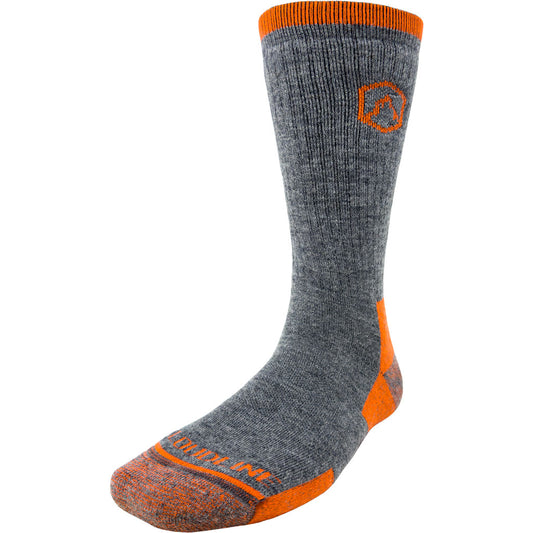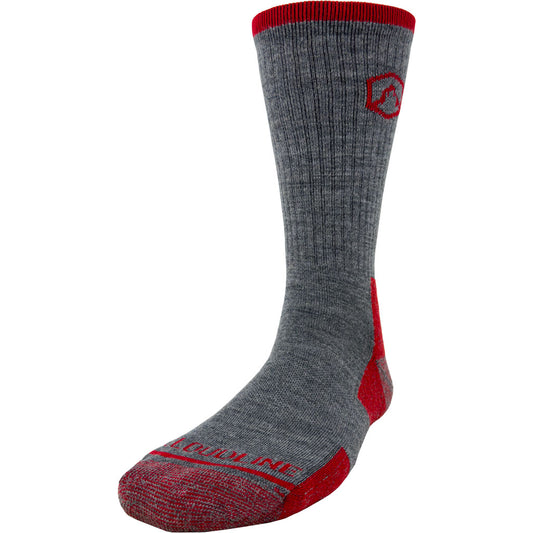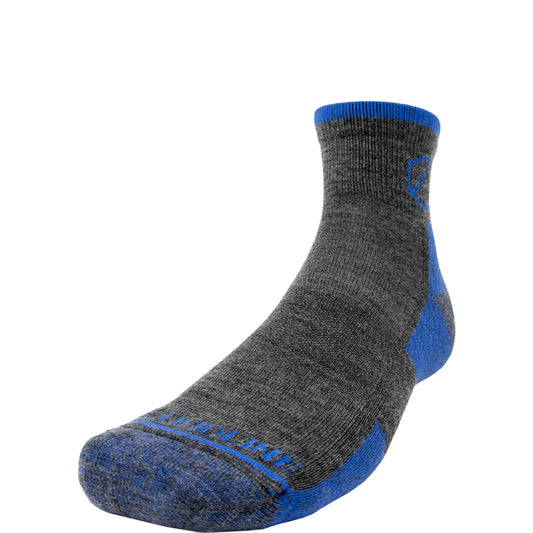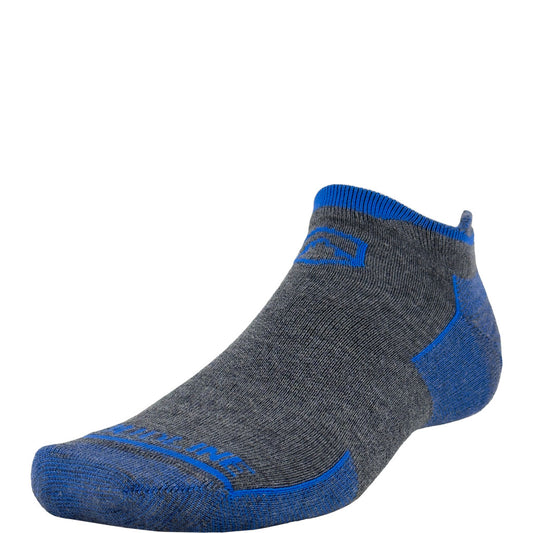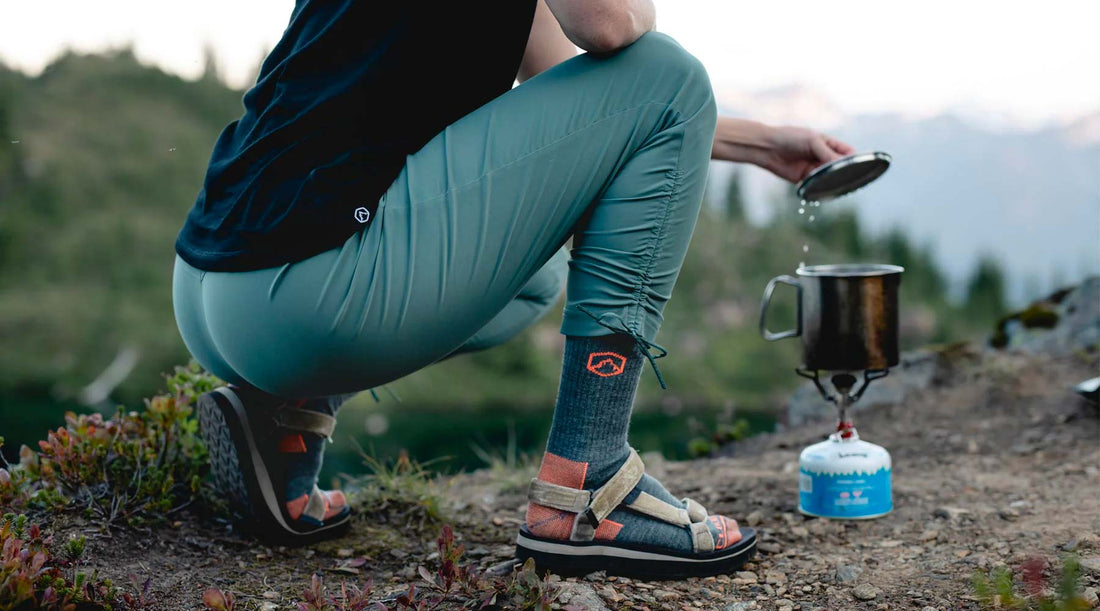
7 Surprising Ways Your Hiking Socks Can Help You Survive in the Wilderness
We do our best to be prepared - carrying the 10 essentials, planning our routes, and exercising caution - and most of the time, that's all we need to have a safe backcountry adventure.
But the backcountry is wild, and it’s impossible to plan for everything. Sometimes, the unexpected happens, and survival can hinge on more than the 10 essentials.
Your skills, resourcefulness, and wilderness knowledge go a long way when you’re in the woods. But so does one overlooked resource that you always have with you when you’re hiking, backpacking, or camping. That’s right - a good pair of hiking socks can be a useful tool when you’re lost, hurt, or just trying to get out of the backcountry.

When you’re in a tough spot, socks can do a lot more than keep your feet warm and blister-free. In fact socks have a long history of saving lives (remember the Apollo 13 astronauts?).
That’s right - Cloudline socks aren’t just comfortable, they could also help you get out of a tricky situation.
Plan ahead, prepare, and hope you never need these tips. But just in case, here are ten ways you can use your hiking socks to help you survive in the wilderness.
1. Pre-filter Water
When you’re collecting water from a silty, gritty source, you can pre-filter your water with a hiking sock. Pull a sock over the mouth of your water bottle to keep particles and floaters out of your water. A clean sock is best, but a dirty sock works, too. You’ll need to purify the water anyway before you drink it.
You can purify your water by boiling or using a backpacking filter, but keep water purification tablets in your first aid kit for emergency situations.
2. Use a Clean Sock to Dress a Wound
You should always hike with a first aid kit, because you never know when you’ll need it. Of course, the size of your kit depends on where you’re going and for how long. But if you run out of gauze, forget to re-stock, or forget your first aid kit entirely, an extra pair of clean socks can come to the rescue.
If you’re out of first aid supplies, you can use a clean sock to stop a bleeding wound.
Fold the sock over several times and apply strong pressure. If the wound is on your arm or calf, you can even cut the toe off the other sock and slide it on your limb to hold the dressing in place once the bleeding has stopped.
3. Use Socks as Mittens
Have you ever thought of socks as mittens for your feet? Or mittens as socks for your hands? Okay, maybe not, but they do the same job. That’s why an extra pair of socks is a great substitute for mittens when you need to warm up those fingers on the trail.
Keeping your fingers warm is crucial in a survival situation. Obviously, you want to avoid frostbite, but you also want to keep your hands warm so you can use them. When your hands get too cold, it’s hard to zip zippers, light matches, or set up your shelter. Wear extra socks as mittens, and share the benefits of quick-drying merino wool with your fingers.
4. Make Emergency Trail Markers
Getting lost in the backcountry is a scary situation, so make sure you’ve planned your route, notified someone where you’re going, and packed a map before heading out.
But even with good planning, it’s possible to lose your way. Maps become outdated, social trails lure you off your route, and blizzards can leave you disoriented.
Experts agree that in a wilderness emergency, your odds of being rescued increase if you stay put. However, if you are in a situation where you don't think help is on the way or your condition requires you to move, it’s a good idea to mark your path. This allows you to find your way back if you think you veered more out of the way. It also helps rescuers follow your trail.
You can always make arrows with rocks or branches, but using a brightly-colored sock will make your trail markers easier to see. Cut strips from extra socks and tie them around branches so you can mark your path as you try to reorient yourself.
5. Stake Your Tent With a Deadman Anchor
This tip comes in handy on backpacking trips in snowy, sandy, or rocky areas. Use this trick to keep your tent in place when stakes won’t do the job - because the last thing you want is to return to your campsite to find your tent has blown away.
- First, fill a sock with snow, sand, or pebbles.
- Tie your guylines to the sock.
- Bury the sock in the sand, snow, or dirt.
The buried, filled sock acts as an anchor to keep your tent in place. You can also use this method to quickly secure a tarp and create an emergency shelter.
6. Get Better Traction on Icy Ground
When you’re hiking in the mountains or during the shoulder seasons, the weather can change on a dime. If there’s ever a chance you’ll have to cross any dangerous terrain in sketchy conditions, pack a pair of crampons or traction cleats. Losing your footing on an icy slope can lead to serious injury.
But if dangerous conditions creep up on you while you’re unprepared, an extra pair of socks can save the day.
Use extra socks to add traction when making a treacherous, icy crossing. Pull the extra socks over your hiking boots to increase the friction between your feet and the ice. The fibers of the sock will stick to the slick ice, giving you more traction and control of your footing.
7. Make a Heat Pack
Heat packs come in handy in lots of situations. Of course, they’re super helpful when you need to warm up. They can also help reduce joint pain and stiffness around injured tissue. With a hiking sock and a hot stone, you can DIY one with just a few simple steps:
- Start a fire.
- Find a few large rocks so you can replace the rock in your sock as it cools. Look for the biggest rocks that will fit in your sock, since they’ll stay warm longer.
- Put your rocks in the fire to heat up.
- Once the rocks are hot enough, use a stick to pull one away from the fire.
- Let it cool for a few minutes so you can safely get it inside your sock, and then use it to warm up or soothe aching joints.
You can keep your heat pack hot by cycling through the hot stones, putting the cold ones back in the fire to heat back up.
Prepare Yourself With Knowledge, Skill, and Extra CloudLine Socks
Hopefully you can stick to wearing your favorite hiking socks on your feet, where they’ll prevent blisters, provide ultra soft support, and keep you nice and warm. But it can’t hurt to throw a couple of extra pairs of socks in your backpack, just in case.
Of course, nothing beats proper preparedness, skill, and knowledge when it comes to surviving in the backcountry. If you want to learn more about safety and first aid - or you plan on spending extended time in the wilderness - you can always take a course in Wilderness First Aid. Heading into the woods with the knowledge you need to stay safe (and of course, a couple extra pairs of socks) is the best thing you can do to take care of yourself and your adventure partners.
Need a couple extras of your favorite hiking socks? Shop Men’s and Women’s 3-packs of your favorite Cloudline socks so you’ll always have an extra pair to throw in your backpack. See you on the trail!

